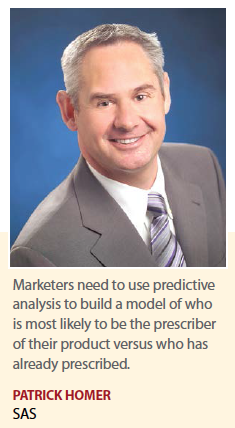 In 2016 and beyond, analytics-driven strategies will shape the industry’s marketing and sales in a more efficient and cost-effective way. The accessibility of consumer data, combined with tools that can quickly mine that data, will pave the way for more targeted and effective tactics. From physician profiling to programmatic buying, big data is the future of pharmaceutical marketing.
In 2016 and beyond, analytics-driven strategies will shape the industry’s marketing and sales in a more efficient and cost-effective way. The accessibility of consumer data, combined with tools that can quickly mine that data, will pave the way for more targeted and effective tactics. From physician profiling to programmatic buying, big data is the future of pharmaceutical marketing.
Traditionally, pharma has targeted the top-decile physicians on the assumption that the historically highest prescribers also represent those with the highest prescribing potential.This approach doesn’t account for physicians whose prescribing has peaked — where sales calls will yield diminishing returns — nor does it account for physicians in historically low deciles with potential to become high prescribers for the brand. According to Patrick Homer, principal industry consultant, global practice, health and life sciences, SAS, using data to determine predictive behaviors helps more accurately identify high prescribers and can evaluate all variables to create a behavioral profile. This method helps marketers target other physicians who share the same characteristics but have not yet started prescribing highly. These physicians represent high potential, but have yet untapped value, and, are the most productive targets for promotion.
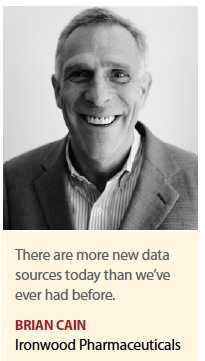 Having determined the present and/or future value of a healthcare provider at the brand, franchise — group of brands — or enterprise level, marketing investments can then be aligned with the appropriate providers. Specific groups are created and receive tailored communications that drive the most incremental scripts for that segment. In the process, pharma companies not only create a lift in scripts, but they understand why these physicians are prescribing and how they respond to sales and marketing activities.
Having determined the present and/or future value of a healthcare provider at the brand, franchise — group of brands — or enterprise level, marketing investments can then be aligned with the appropriate providers. Specific groups are created and receive tailored communications that drive the most incremental scripts for that segment. In the process, pharma companies not only create a lift in scripts, but they understand why these physicians are prescribing and how they respond to sales and marketing activities.
Before being able to accurately identify targets, however, marketers must integrate all of the data sets — sales, prescription, and CRM data; physician and patient marketing data; and patient longitudinal data — that typically sit within different repositories and combine them into a predictive model.
“Marketers need to begin to use predictive analysis to build a model of who is most likely to be the prescriber of their product versus who has already prescribed," Mr. Homer says. “From our experience, this is where a significant step change starts to happen: profiling the audience by prediction rather than by what they’ve done in the past."
Pfizer is one company that is using analytics-driven messaging to engage physicians with information that is most meaningful to them in terms of how they treat their patient population.
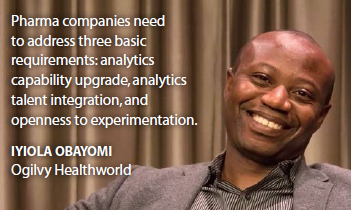 “The challenge is that this information varies by doctor," says David Kreutter, Ph.D., VP, business analytics and insights, Pfizer. “Each has his or her own expertise, experience with a particular therapy, and unique patient population," Dr. Kreutter says. “By using big data and analytical capabilities, we are able to understand what combinations of messages are most useful to individual physicians, thereby providing them with the information that will best help them drive optimal patient outcomes. We also adapt to their changing information needs by analyzing data in real-time."
“The challenge is that this information varies by doctor," says David Kreutter, Ph.D., VP, business analytics and insights, Pfizer. “Each has his or her own expertise, experience with a particular therapy, and unique patient population," Dr. Kreutter says. “By using big data and analytical capabilities, we are able to understand what combinations of messages are most useful to individual physicians, thereby providing them with the information that will best help them drive optimal patient outcomes. We also adapt to their changing information needs by analyzing data in real-time."
Those companies that know how to identify the right data elements and employ them properly will see the most quantifiable brand growth, therefore targeting will become an essential ingredient in marketing strategies.
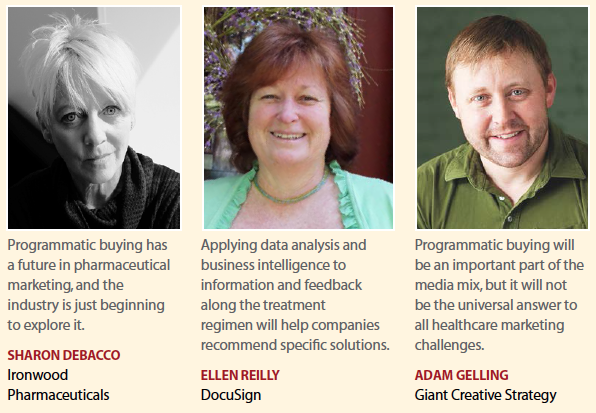 “Systematic approaches will be needed — and demanded — when marketers are making decisions regarding patient and physician communication vehicles," says Mike Byrnes, VP of sales and business development, Rx EDGE Pharmacy Networks. “As a result, a greater degree of precision will be applied to ensure that messages reach the most receptive and relevant audience."
“Systematic approaches will be needed — and demanded — when marketers are making decisions regarding patient and physician communication vehicles," says Mike Byrnes, VP of sales and business development, Rx EDGE Pharmacy Networks. “As a result, a greater degree of precision will be applied to ensure that messages reach the most receptive and relevant audience."
This type of targeting is not new, but the wealth of information available to do the targeting is increasing, and so are the tools and technologies that help collect and mine the data.
“The fact is, there are many more new data sources today than we’ve ever had before," says Brian Cain, VP, marketing research and business analytics, Ironwood Pharmaceuticals. “In addition to the traditional attitudinal data, we now have significant behavioral data."
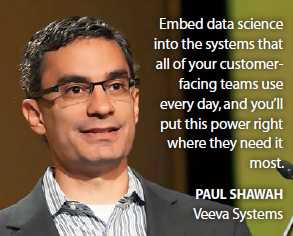 The addition of more behavioral data sources boosts the ability to target where and when the message should hit, and what it should say for the optimum response from a physician.
The addition of more behavioral data sources boosts the ability to target where and when the message should hit, and what it should say for the optimum response from a physician.
These data sources include de-identified, over-the-counter, claims records, and prescriptions. Analyzing all this information together enables a much more dimensional picture of how physicians and patients interact.
“As a result, we can more finely tune how we target physicians and patients with appropriate product messages, and we can help ensure that we are reaching the right audiences about the right products," Mr. Cain says. “We are also better able to measure the impact of our efforts."
Analytics, including such things as social listening, personality profiling, and other psychometric measurements help get to a real understanding of the needs of all audiences. Understanding human behavior and the perceptions that drive that behavior is essential to changing perceptions and thus changing behavior. Content can be generated and delivered in a very targeted way that allows for evaluation of the utility and value of the content to each individual in real time.
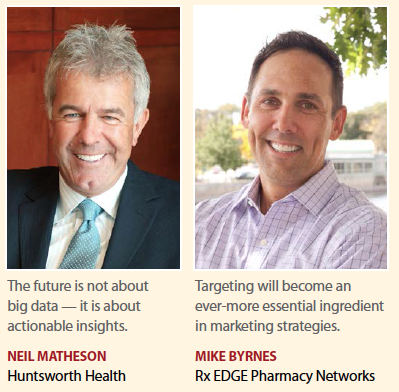 “The future is not about big data — it is about actionable insights gleaned from the nuggets within the big data set and finding those nuggets is the key to successful communications strategies," says Neil Matheson, global CEO, Huntsworth Health. “Analytics will inform the way in which we drive that behavioral change."
“The future is not about big data — it is about actionable insights gleaned from the nuggets within the big data set and finding those nuggets is the key to successful communications strategies," says Neil Matheson, global CEO, Huntsworth Health. “Analytics will inform the way in which we drive that behavioral change."
Data analytics can uncover customer behaviors and preferences, but using those insights to orchestrate sales, marketing, and medical strategies will be the real differentiator in the future. Being able to identify the audience with increased accuracy is not the biggest challenge today, says Paul Shawah, VP of product marketing, Veeva Systems. Getting internal consensus on the right approach is still a problem within siloed organizations.
“Today, sales, marketing, and medical strategies almost never come together because these respective teams are disconnected from one another, greatly limiting collaboration," he says. “To make matters worse, digital is often treated as a separate entity, creating yet another channel."
Consequently, targets may be touched by the same company multiple times per week — or even per day — for just a single brand. If these efforts are not coordinated, this can actually do more harm than good by magnifying customer fatigue.
According to Ellen Reilly, VP, life sciences and healthcare, DocuSign, pharma can learn from industry leaders in technology and retail who are curating products and services toward specific consumer groups rather than taking a one-size-fits-all approach.
“Applying data analysis and business intelligence to information and feedback along the treatment regimen will help companies recommend specific solutions," Ms. Reilly says. “Working to better understand needs and influences for physicians’ and patients’ treatment choices will help companies make smarter marketing investments, exposing new channels for reaching customers when they are consciously considering product choices. Segmentation is crucial to effective marketing, especially in light of pricing pressures and the shifting cost of care, which place greater financial burdens on patients."
Data analytics has matured to the point where true data-driven marketing is feasible, says Iyiola Obayomi, senior director, marketing analytics, Ogilvy Healthworld. To better use data analytics to target customers effectively in the coming years, pharma companies need to address three basic requirements: analytics capability upgrade, analytics talent integration, and openness to experimentation.
“First, companies should update their data analytics repertoire; access to datasets, technology, and talents are a fundamental requirement without which data-driven marketing cannot occur," Mr. Obayomi says. “Companies can now access various datasets that can provide detailed customer attributes, preferences, engagement, and longitudinal behavioral patterns. But having the capability is not enough; these should be integrated into the planning process and not be walled off or only be tapped into sporadically. Analytics should be integrated into the marketing strategy and communications planning process so that data can inform segmentation, content, channel, and execution decisions."
Tools of the Analytics Trade
Both tools and technique will play an equal part in bringing analytics-driven marketing decisions to the forefront of tomorrow’s marketing plan. Functioning in a more complex marketplace will require strategic, analytical thinking as well as tools to drive innovation.
“One area where analytics is extremely helpful is the nexus between payer, physician, and patient," Mr. Cain says. “Through data analytics we can look at deductibles and their impact on affordability, and then evaluate different offerings and incentives based upon what we believe might be of most benefit to the patient. As a result, this allows us to help the appropriate patients to continue accessing the medicines they need by helping them manage their out-of-pocket costs."
Mr. Cain believes that one of the most significant tools to change the landscape is the evolution into electronic patient records.
“There are products that take all of the various inputs on a patient cohort basis — individual patient data are not revealed — and develop a longitudinal picture that gives the healthcare community a richer understanding of treatment practices and healthcare solutions," he says. “These data, over time and across systems, give us the ability to better understand day-to-day treatment choices for large patient cohorts and the impact of choices on patients’ health. In turn, we can use this perspective in developing communications to physicians."
One of the most promising technologies, which will play a critical role in 2016, is data science, which correlates large volumes of data with actual customer behaviors, to make predictions on how to optimize future engagement. Data science technology has the power to do what individuals cannot: quickly collect and connect customer insights across all channels and teams to suggest the best channel and message for each individual customer.
“We talk a lot about the customer journey in marketing, but we typically think of this as a sequential walk down a carefully designed path," Mr. Shawah says. “More often than not, however, customers don’t follow our predetermined course."
To deliver a consistent, harmonized customer experience, marketers need to gather and analyze data across all interactions with the company — spanning medical affairs, sales, marketing, and digital. Data science connects these dots in real time and comprehensively analyzes all data points to make intelligent recommendations on what to do next for the best result, creating a holistic view to guide the entire company. Unlike any innovation before, data science enables life-sciences organizations to look at every communication through the customer’s eyes and adjust based on actual behavior rather than forcing the customer down pre-defined pathways.
“Embed data science into the systems that all of your customer-facing teams use every day, and you’ll put this power right where they need it most," Mr. Shawah says.
Programmatic Buying
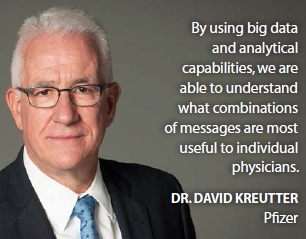 The growing trend of programmatic buying becomes more prominent with the increase of digital, omni-channel strategies. According to a recent study by Magna Global, programmatic sales are projected to spike from $15 billion in 2015 to $32 billion by the end of 2017. Couple that with the fact that programmatic buying has gone up 20% in the past six months alone, and it’s safe to say that the future of programmatic advertising is bright. But can pharma companies take part in it? Our experts say yes, and they are.
The growing trend of programmatic buying becomes more prominent with the increase of digital, omni-channel strategies. According to a recent study by Magna Global, programmatic sales are projected to spike from $15 billion in 2015 to $32 billion by the end of 2017. Couple that with the fact that programmatic buying has gone up 20% in the past six months alone, and it’s safe to say that the future of programmatic advertising is bright. But can pharma companies take part in it? Our experts say yes, and they are.
With the proliferation of advertising opportunities online — the number of websites reached 1 billion in 2014 — it’s no longer possible or productive to approach digital display planning and buying in the manual way of the early 2000s, says Sharon DeBacco, VP, product promotion and communications at Ironwood Pharmaceuticals.
“Programmatic buying offers us the use of actual de-identified behavioral info about an individual to inform the media we purchase, versus yesterday’s approach of using media as a proxy for people — it’s a complete flip of our old approach, putting precision at the forefront of planning and buying," she says.
Ms. DeBacco says the tremendous opportunity that programmatic media provides is the unprecedented ability to automate the delivery of targeted, relevant advertising in real time, on a one-to-one basis, at massive scale.
“Never before in marketing has one-to-one personalization co-existed with the ability to achieve this scale," she says. “But now, powered by big data and technology, we can significantly improve the relevance of our advertising, by more rapidly and efficiently getting our information to the people who need it most — those who suffer from conditions we can help treat."
The biggest risk of programmatic buying is ensuring that objectives, strategies, and business rules are correct, Ms. DeBacco adds. She cautions against optimizing for efficiency, and in the process, damaging the brand equity over time.
“Keeping a close eye on what it is you are asking this tremendously powerful ecosystem to deliver for your brand must remain a constant priority," she says. “The challenge for our industry is two-fold: first, to get up to speed with all of the available technology so that we as a sector can be more advanced in our appreciation and application of it, and second, to stay current with how this ecosystem is constantly and rapidly evolving."
Smart marketers are using data, key engagement metrics, and content experiences to deliver more qualified ROI for brands, says Lindsey Guenther, senior VP, revenue operations and advertising products, Remedy Health Media, adding that the emergence of content marketing platforms has changed the way that brands are engaging with consumers.
“As marketing partners with our brands, publishers are able to leverage the power of data to create engaging content experiences that introduce end users to relevant, personalized, marketing experiences," she says. “Smart technology solutions allow publishers to use data to inform content experiences that provide value to both end users and marketers. Where this is critical for pharma is recognizing that audience data does not have to be tied to be PII and attributes of user intent and behaviors are extremely powerful."
There are risks and challenges for the industry regarding programmatic buying but it is still an important part of the media mix with plenty of perks, says Adam Gelling, principal, chief strategic officer, Giant Creative Strategy.
“The challenges of programmatic advertising are many and include fraud, view-ability, brand safety and transparency," he says. “In contrast, the opportunities include lower CPMs, larger reach, and convenience."
A dichotomy lies between the two targets: patients and physicians. For patients, data integration and technology are enabling better targeting. Use will increase alongside improved efficiency and effectiveness. On the HCP side, however, it has been a challenge, Mr. Gelling says. Due to the relative low number of HCPs in the United States, it has been a needle in the haystack problem.
“Programmatic technology vendors can certainly find the audiences, but ads are often not delivered in contextually relevant places, thus minimizing their effectiveness," he says. “There is a glimmer of hope that programmatic buying for HCPs will take off if we look at a corollary: Bizo, a B2B programmatic buying company, was acquired by LinkedIn. It saw that there was enough demand to cater to B2B marketers. Let’s hope more technology companies see the potential in healthcare and bring their solutions to market."
Similarly, Shankar Narayanan, global head of life sciences, Cognizant, says with the industry’s move toward specialty markets, there is a risk that programmatic buying may not be flexible enough to include the right outlets and properties to reach those few right people, patients and HCPs.
“When we think of programmatic buying, we tend to think about patients," Mr. Narayanan says.
“Because those audience sets are so broad, lookalike modeling can be easy to do. However, reaching HCPs is more challenging, especially within a specific specialty because the number of individuals is so much smaller."
Programmatic buying also represents a broader trend in which powerful algorithms displace functions previously held by specialized agency team members, Mr. Narayanan adds.
As more services are mediated via software, the service-driven agency business model is coming under pressure with brand teams realizing they can either demand lower prices and/or bypass many agency services altogether.
“This type of disruption levels the playing field for small agencies, and/or allows clients to bring media buying in house," he says.
According to Ms. DeBacco of Ironwood, programmatic buying has a future in pharsxmaceutical marketing, and in many ways, the industry is just beginning to explore and apply what this technology can offer. (PV)


















